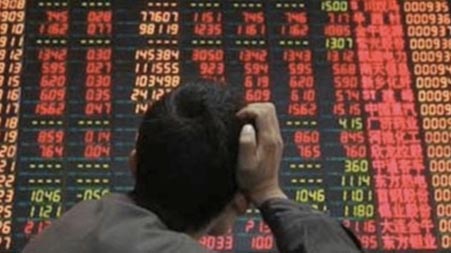 Computers don’t get emotionally invested in financial trades, but they do take feelings seriously.
Computers don’t get emotionally invested in financial trades, but they do take feelings seriously.
Case in point: The financial trading dashboard managed by
Thomson Reuters uses sentiment analysis data from Lexalytics to track news on
20,000 stocks and thousands of commodities. The Lexalytics system
parses text from multiple sources, looking for keywords, tone,
relevance and freshness. The resulting textual analysis (the meaning of the text) and sentiment analysis (the emotions in the text) is then
incorporated into widely used algorithmic trading systems.
Mark Thompson, CEO of McKinley Software (the parent company of Lexalytics), told me more about this emotion-to-data conversion. “Our financial engine is something we developed over an 8-year period, and the main partner for that is Thomson Reuters,” Thompson said. “The Thomson Reuters news passes through our black box and we kick out scores based on 80 different variables for all of the articles.”
Algorithmic trading is automated trading where trading software takes various inputs, or “trading signals,” and uses them to decide what trades to make. Trades are executed in a matter of milliseconds and there is no human intervention. In 2009, algorithmic trading accounted for more than 25 percent of all shares traded on the buy side. No human being can read the latest financial news fast enough to contribute to those buy or sell decisions. That’s where sentiment analysis comes in.
 OSCON Data 2011, being held July 25-27 in Portland, Ore., is a gathering for developers who are hands-on, doing the systems work and evolving architectures and tools to manage data. (This event is co-located with OSCON.)
OSCON Data 2011, being held July 25-27 in Portland, Ore., is a gathering for developers who are hands-on, doing the systems work and evolving architectures and tools to manage data. (This event is co-located with OSCON.)
“By scoring the news, within milliseconds we get a very accurate view of what’s being said about a particular stock or sector,” Thompson said. “Thomson Reuters sells that output to trading houses who then plug this data into their algorithmic trading
models. We have found that we can predict stock market movements. We provide an extra layer of richness that trading staff haven’t been able to get their hands on. Otherwise, you are just doing very two-dimensional quant
processing.”
Rochester Cahan, VP of Global Equity Quantitative Strategy at Deutsche Bank, has been experimenting with the Thomson Reuters system. Cahan told me that he has seen significant improvements in trading performance when the text analysis and sentiment scores are used as trading inputs. In addition, the scores are uncorrelated with existing trading signals — in other words, they provide new information to the trading system.
The most positive sentiment levels (e.g. Apple releases the iPad to universal acclaim) are not necessarily the most useful for trading. The stock price reacts very quickly so it’s difficult to take advantage of the information. However, Cahan said stocks with moderate positivity tend to be overlooked by the market and can make for good buys.
I asked Thompson about the limitations of the sentiment analysis technology. He explained that even human beings don’t agree on the sentiment of an article more than about 85% of the time. “The problem with our kind of engine is trying to get
above 85% accuracy,” Thompson said. “Beyond that level, you get a diminishing return and you need more human intervention. This leaves the human analyst to
pass different types of judgements.”
The competitive edge may be lost if all trading systems use sentiment analysis, but Thompson thinks there is some distance to go before we get to that point. “Everyone has a slightly different way of composing the model and using the news, and there are always advances in the technology,” he said. “But there will come a point when sentiment becomes an ordinary part of the trading mix.”
Photo: ABOVE by Lyfetime, on Flickr
Related:
